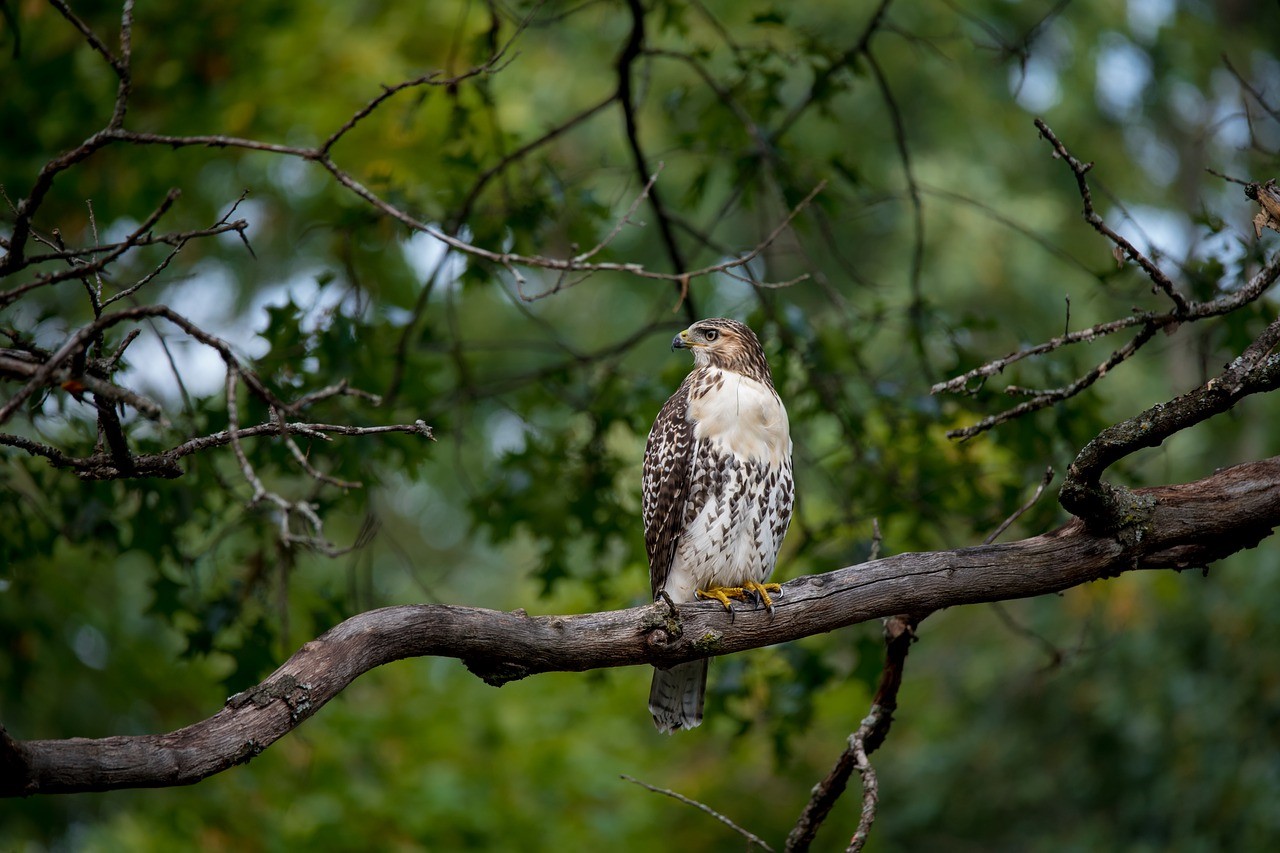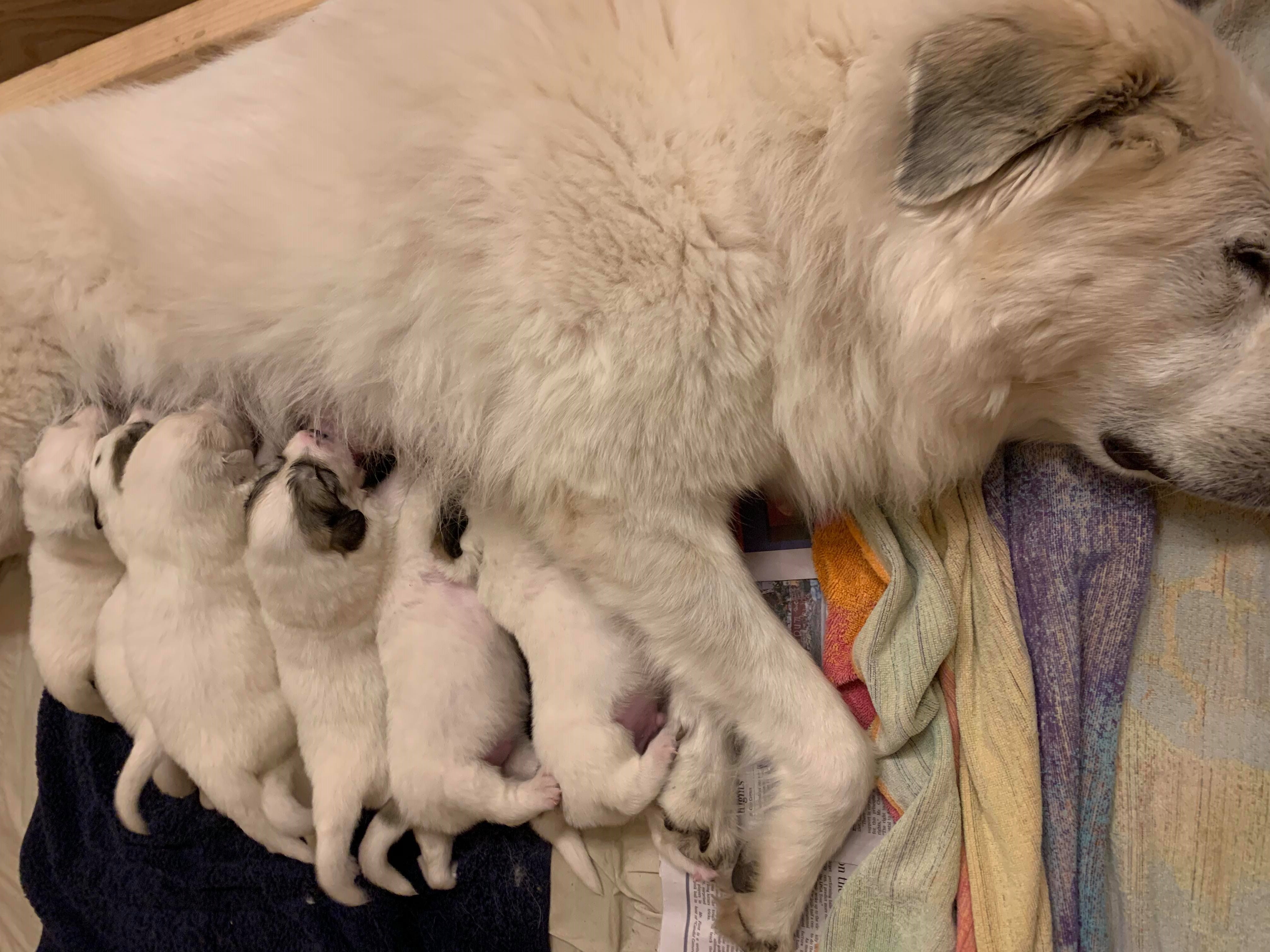Sugar loves her chickens and prefers to be outside where she can protect them. Thanks to her, there are very few predators that threaten our chickens. However, from time to time we’ve struggled with hawks.
This post contains Amazon affiliate links. I may earn money on qualifying purchases.
How do LGDs Guard
Sugar patrols the fence line frequently during the day. Her large presence is intimidating enough to keep the common predators away. Sugar weighs about 85 lbs and when she stands on her hind legs, she is approximately 5 feet tall. Jaxson is a little taller and still growing.
Another technique used to deter predators is scent marking. This lets other animals know this is her area so stay away. Jaxson loves to help with this.
LGDs will bark when they feel a predator is close. You may not see or hear them, but Sugar does. Her loud deep bark will be enough to scare them away. If you only have one LGD, they will use different pitched barks so predators will think there is more than one dog.
Lastly, Sugar will chase off a predators. At home, there isn’t a need for this, but when we are at our property, she doesn’t hesitate to chase off a coyote if they get too close. She is fierce but I always send my husband, Herb, after her.
Guard Up

Because we’ve had trouble with hawks, one thing we’ve been working on is “guard up.” Whenever I use this, Sugar looks up at the sky, barks, and sort of hops up in the air. It helps that I give her a Good Girlie Treat.
“Guard up” or guarding against aerial predators can be difficult for LGDs but with a little patience and training, they can be successful. A lot of people I know have Pyr’s that protect against hawks, eagles, and vultures.
What else can you do to protect your chickens from hawks?
Run Fishing Line
A few years ago, Trudy our white Leghorn, was attacked by a hawk. I think the hawk was young and she was too heavy to be carried away. Herb ran fishing line crisscrossing it around the garden and by the front door of the coop. It’s believed that the hawk can see the line and will avoid it. If the hawk swooped down, he would get tangled up in it.
This year we decided to add poultry netting at the other end of the garden. We installed hooks in the fence and the eaves of the house and hung the netting. Since getting Jaxson, the chickens spend most of their time in the garden, so it was important to us to give them a safe space.
Give them something to hide under
Trudy has taken on the role of protector since we don’t have a rooster. She sounds the alarm if she feels threatened. Recently, it was a birthday balloon floating in the backyard. When she squawked, the girls all ran and hid. In addition to the bushes they can hide in, we have some lawn chairs, a wheelbarrow, and a trailer. These items give them additional coverage.
Hang shiny objects
Hanging shiny objects around confuses hawks. When the sunlight catches it, the bright light mimics a lot of activity and deters the hawk.

I use three different things. First, I purchased some hanging outdoor spinners at the Dollar Tree and placed them in the Crepe Myrtle that’s in our garden. I’ve also hung some old CDs in our red-tip bushes and purchased NiteGuard Repellent Tape. The repellent tape not only reflects light but also makes a rustling sound, which can be startling.
Training an LGD to protect your chickens from hawks can take some time. Sugar started guarding from day one and is a natural guardian. She required very little training, just some gentle correction. Jaxson, on the other hand, still wants to “play” with the chickens but his instincts are there. If Sugar starts barking, that’s all it takes for him to back her up.



